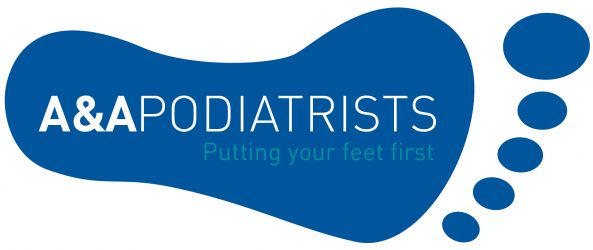Aftercare
Treatment Advice
Verruca Treatment
Your Podiatrist would have discussed that the usual aim of verruca treatment is to destroy the skin containing the virus. Chemicals or freezing techniques are commonly used to achieve this.
After freezing the area can be sore for a few days. In some cases a blood blister can form in which case this can be treated in the clinic. Otherwise we can provide padding to the area to reduce pressure whilst the area calms down after the freeze.
If strong chemicals are used, it is not uncommon to experience pain or discomfort after 2 days. This usually subsides after 2 more days. The advice I normally give is that if it is particularly sore or with a child then REMOVE the dressing and bathe the area in a strong salt water solution. Painkillers such as Paracetamol/Calpol can be taken as directed. In addition, a paste of bicarbonate soda/baking powder can be made and applied to the area. This helps neutralize the acid. If this is still unhelpful then please call and arrange an appointment where we usually remove the superficial dead skin of the verruca to remove the acid in there.
In all cases please do not hesitate to call the clinic for help and advice if you are at all uncertain.
Following treatment with acids, the area can often look white and with black areas where the blood vessels in the verruca are killed. Sometimes there is a brown thick discharge where the verruca liquefies. This is all normal.
This aftercare sheet Verruca Leaflet for patients is often given out after your appointment or is available in reception.
Ingrown toenail surgery – PNA
Painkillers (paracetamol/ibuprofen) can be taken afterwards as required and as directed on the medicine. The toe is not normally that painful and some people do not require much analgesia.
If there is excessive bleeding, for example if you knock the toe, then apply additional dressings over the existing dressing and apply pressure for 10 minutes with the leg raised. This will usually stop the bleeding.
Please call us if you are at all worried. If you do need out of hours assistance then you can go to the A & E Department and inform them that you had a Partial Nail Ablation with Phenol applied to the matrix for 3 minutes. The local anaesthetic would usually be mepivicaine plain and a maximum of 66mg would have been used per toe.
Normal advice is to change the dressing after 2 days with those provided. Bathe the toe in salt water for 3 minutes or spray with Clinisept, dab dry with kitchen towel and apply a clean dressing. After a week then you can wipe the toe with cotton wool whilst in the salt water. A yellow discharge is normal for about 3-5 weeks. We usually advise returning for check up after 1 week and then every 7-10 days until healed.
Here is the information available from the clinic- Aftercare for nail surgery
Video showing a patient how to redress the toe after surgery.
Callus and Corns
The cause of these skin formations is typically pressure and friction. Callus a shearing stress and corns a compressive. The foot is pressured from the shape of the bones, the effectiveness of the cushioned fat pad and skin and the interaction with shoes and the outside world. Hard floor surfaces, shoes that aren’t deep enough as well as not doing up laces on shoes or shoes with worn insoles can all increase the pressure on the foot and skin. You may notice a callus on your finger when doing lots of writing or the pads of the hands from weightlifting.
Skin is constantly growing and therefore within a month can already be accumulating. The skin can become dry and poor quality and then its resilience decreases.
To improve this condition, improvements to skin quality – foot moisturiser e.g. CCS cream contains 10% urea designed to soften callus – is advised together with steps to reduce the pressure on the foot/prominences. Appropriate shoes or we can provide orthoses or insoles to redistribute the pressure too.
Stretching Exercises for Heel Pain Syndrome / Plantar Fasciitis
Typically exercises are used daily in combination with a gel heel pad, foot orthotic, strapping or supportive shoes.
We also advise using ice for 5-10 minutes daily as well as massaging the sole of the foot daily.
Eccentric-Exercises PDF Plantar Fasciitis
Plantar fasciitis Infographic eccentric
Athletes foot / Tinea Pedis Treatment
Your Podiatrist would have diagnosed a fungal skin infection and advised a suitable treatment. This sheet provides some information about treatment.

